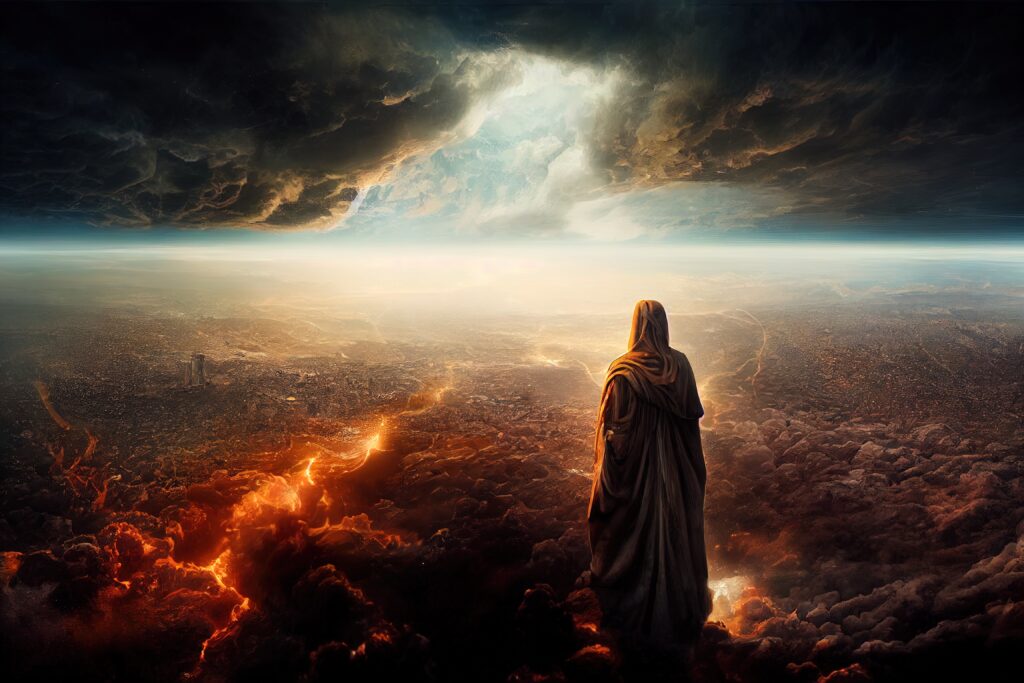
Laodicea – Hot, warm, or Cold?
“Write this letter to the angel of the church in Laodicea. This is the message from the one who is the Amen—the faithful and true witness, the beginning of God’s new creation: “I know all the things you do, that you are neither hot nor cold. I wish that you were one or the other!” – Revelation 3:14-15 NLT
This is the last church in the stream of time – that would be us. It has a pointed message concerning what we need to do in preparation for the return of Christ.
The city was built about 250 BC and was located on one of the great Roman Roads between Damascus and Arabia. The city was destroyed in 60 AD by an earthquake. The message to the church at Laodicea connects strongly with the history and the environment of the city. The city was infamous for its wretched water supply. It was lukewarm in temperature and filled with sediment and lime. It was too cold for bathing and too warm to be refreshing on a hot, summer day. Jeremiah had used rotten food to illustrate the disgust God felt for the behaviour of the people (Jer.24:1-10). In this text, Jesus offers an image appropriate to the situation of Laodicea.
Known for its self-sufficiency. It was a wealthy banking centre in the time of Emperor Domitian, who was assassinated in 96 AD. The city was also famous for its textiles, particularly cloth and carpets woven from black wool, a startling contrast to Jesus’ offer of white garments. The city was also home to a first-century medical school that specialized in ear and eye ointments.
So Laodicea the city, like the church it housed, was a self-sufficient place that did not feel its need of outside support, even though its water system came from outside and was not palatable. Jesus used the history and environment of Laodicea as an illustration of the shortcomings of the local (and end-time) church. Why does God see one thing and the people of Laodicea another? The reason lies in the fact that God and Laodicea are really looking at two different things.
Modern Laodicea gazes upon material things. She tends to observe her achievements, which are not inconsiderable. She thinks of her missionaries at the end of the earth. She recalls the hospitals and dispensaries which her wealth has erected and which her generosity maintains. She surveys the schools and colleges in which she purposes to lead her young people in the way that is right. She counts her printing presses and publishing houses, established to enlighten the world. She remembers her stately houses of worship, erected in many cities of many lands. She counts her membership and analyses her offerings. It is a splendid showing. Laodicea is complacently happy. She has a flawless doctrine, a competent organization, a triumphant message. Who can deny these things?
There are two ways of translating the word beginning. The underlying Greek word (“arche”) is ambiguous. Jesus is the “arche” of God’s creation. Arche can mean “old” or “beginning,” as in “archaeology,” the study of old things. But it can also mean ruler–the first in the kingdom. Our English word, “patriarch,” means “rule by the father” and “monarchy,” means “rule of one.” So, the word “arche” has a double meaning.
In the Greek Old Testament “arche” is the first major word in the Bible– “in the beginning God created” (“en arche”). So, Rev 3:14 points us to Genesis 1:1. Jesus comes to Laodicea as the “ruler of God’s creation.” He is the counterpart of the original ruler of God’s creation, Adam (Gen 1:26-28). He is the “new” Adam or the “second” Adam (Romans 5; 1 Corinthians 15). He becomes Adam as Adam was intended to be.
In the creation story, Adam is described in terms of three basic relationships. (1) First of all, Adam was in relationship with God. As the “image of God” (Gen 1:26-27) he had great dignity but his relationship with God was that of a subordinate to a superior. (2) The image of God included both male and female (Gen 1:27). God created humanity for relationships with others, regardless of gender or ethnic background. (3) The image of God also included dominion over the earth (Gen 1:26, 28). Adam ruled over the fish of the sea, the birds of the air, and the creatures that move along the ground.
When Jesus came to this earth, He was Adam as Adam was intended to be. (1) He had a perfect relationship with God, obeying everything that God told him to do (John 8:28; 14:28; 15:10). (2) He had a perfect relationship with others, living a life of humble service and self-sacrifice (Mark 10:45; John 13:1-17; Phil 2:5-7). (3) And he had a perfect relationship with the earth and its creatures. Animals and fish obeyed His commands (John 21:2-11; Matt 17:24-27; Mark 11:1-7)! The winds and the waves were subject to Him (Matt 8:26-27). In every sense, Jesus was Adam as Adam was intended to be.
As the second Adam, Jesus walked over the ground we all experience. Like the first Adam, we have a history of failure, dysfunction, and disgrace. But Jesus has walked the ground that Adam walked. My flawed personal history can be replaced by His perfect history. That leaves me the hope that I can be more like the second Adam and less like the first Adam.
